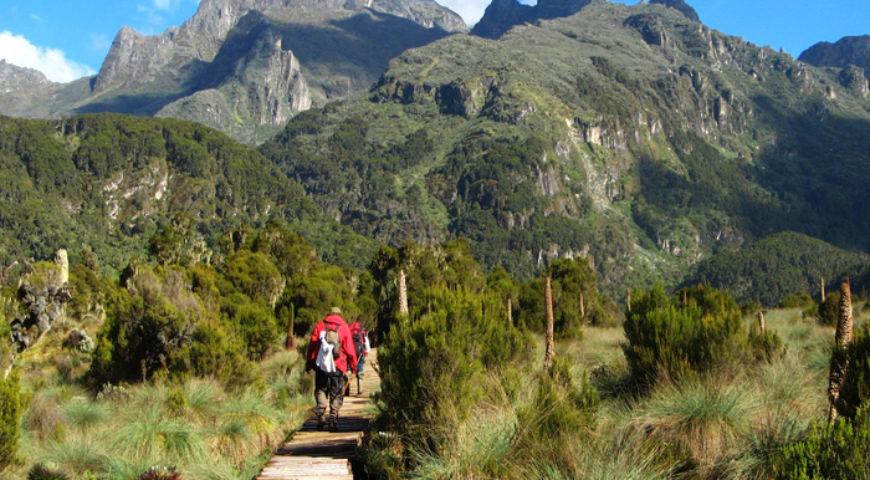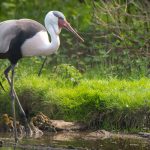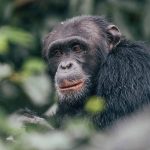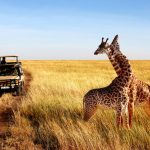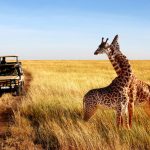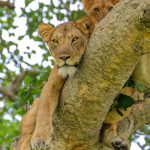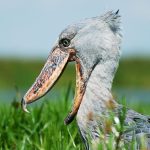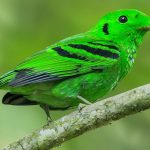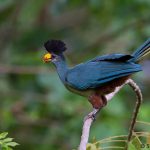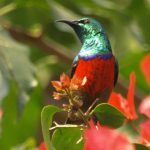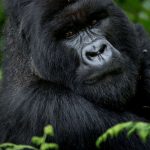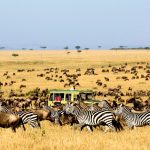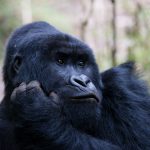Many travellers find Mt. Elgon an exciting alternative to the more strenuous climbs in East Africa. It has many of the same attractions, with a milder climate and lower elevation, and requires no special equipment or technical experience.
Many travellers find Mt. Elgon an exciting alternative to the more strenuous climbs in East Africa. It is easier to access throughout the year, less congested and has many of the same attractions, with a milder climate and lower elevation. Climbing the peaks requires no special equipment or technical experience.
The Sasa trail is the shortest but toughest route to the peaks, traversing the community land and allowing you to explore BaMasaba farming settlements and culture. The round trip takes four days and starts at Budadiri town at an elevation of 1,250m. The toughest climb of over 1,600m is completed on the first day, before crossing the park’s largest area of bamboo forest and passing Jackson’s Pool on the way to Wagagai Peak.
The Sipi trail (four to six days, 56km round trip) starts at 2,050m at the Kapkwai Forest Exploration Centre. It is the longest trail to the peaks, passing through the northwestern mountainside through Tutum Cave to enter the caldera and reach Wagagai Peak. The trail begins gently, but becomes tougher on the third day from Kajeri Camp.
The Piswa trail (seven days, 49km round trip) is long and the most gentle trail. Starting at the village of Kapkwata on the north side of the mountain, it traverses the soft wood plantation to the Podocarpus forest. It’s notable for its rich wildlife and spectacular views of the Karamoja plains in Uganda and the Nandi and Kapeguria hills in Kenya. The Piswa trail also passes the hot springs on the way to the caldera and the peaks.
Alternative hiking options
The various routes can be combines, ascending the Sipi/Piswa/Sasa Trail and descending along the Sasa/Sipi Trail for example. This allows a traverse of the caldera and a visit to the hot springs.
Transboundary hike/cross border tourism: The higher slopes of Mount Elgon are shared with an adjacent national park in Kenya and a transboundary hike can be arranged. After ascending to the caldera with a UWA guide, climbers cross the border to descend with a Kenya Wildlife Service escort.


